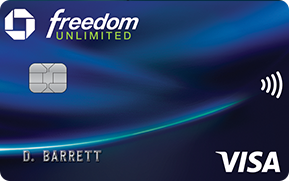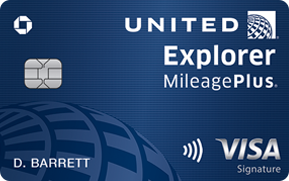- myFICO® Forums
- Types of Credit
- Credit Cards
- CapOne - *Impossible* to report $0 balance??
- Subscribe to RSS Feed
- Mark Topic as New
- Mark Topic as Read
- Float this Topic for Current User
- Bookmark
- Subscribe
- Mute
- Printer Friendly Page
CapOne - *Impossible* to report $0 balance??
Is your credit card giving you the perks you want?
Browse credit cards from a variety of issuers to see if there's a better card for you.
- Mark as New
- Bookmark
- Subscribe
- Mute
- Subscribe to RSS Feed
- Permalink
- Report Inappropriate Content
Re: CapOne - *Impossible* to report $0 balance??
@Remedios wrote:OP is applying for a mortgage either this week or the next week.
AZEO is the best option given the fact they're rebuilding and every point counts.
Additional accounts with balances eat those points.
As far as closing, once your mortgage ordeal is over and you qualify for a better cards down the road, close it if they won't budge. No need to carry rocks in your wallet.
Is there any actual proof a zero balance on all but one card yields better scores than say, a balance of less than 1% of any given card's limit? I ask because I've done both and have seen exactly zero change in my scores.
Chapter 13:
- Burned: AMEX, Chase, Citi, Wells Fargo, and South County Bank (now Bank of Southern California)
- Filed: 26-Feb-2015
- MoC: 01-Mar-2015
- 1st Payment (posted): 23-Mar-2015
- Last Payment (posted): 07-Feb-2020
- Discharged: 04-Mar-2020
- Closed: 23-Jun-2020
I categorically refuse to do AZEO!






In the proverbial sock drawer:



- Mark as New
- Bookmark
- Subscribe
- Mute
- Subscribe to RSS Feed
- Permalink
- Report Inappropriate Content
Re: CapOne - *Impossible* to report $0 balance??
@Horseshoez wrote:Is there any actual proof a zero balance on all but one card yields better scores than say, a balance of less than 1% of any given card's limit? I ask because I've done both and have seen exactly zero change in my scores.
I'm not sure I understand your question, so hopefully Remedios does. All zero balances with just 1 reported small balance on one major bank card is what ensures score optimization. That doesn't mean that score optimization can't be arrived at other ways (more than 1 balance, a higher balance, etc) depending on profile. AZEO is just the simple way/suggestion to guarantee optimization.
Also not all balances of any given percentage are created equal, as not all limits are equal. A less than 1% balance on a $500 limit card could be $4. A less than 1% balance on a $60,000 limit card could be $575. Depending on scoring model and/or scorecard assignment of the profile in question, it's possible that the $575 balance relative to the $4 balance could produce a lower score.
- Mark as New
- Bookmark
- Subscribe
- Mute
- Subscribe to RSS Feed
- Permalink
- Report Inappropriate Content
Re: CapOne - *Impossible* to report $0 balance??
@Anonymous wrote:
@Horseshoez wrote:Is there any actual proof a zero balance on all but one card yields better scores than say, a balance of less than 1% of any given card's limit? I ask because I've done both and have seen exactly zero change in my scores.
I'm not sure I understand your question, so hopefully Remedios does. All zero balances with just 1 reported small balance on one major bank card is what ensures score optimization. That doesn't mean that score optimization can't be arrived at other ways (more than 1 balance, a higher balance, etc) depending on profile. AZEO is just the simple way/suggestion to guarantee optimization.
Also not all balances of any given percentage are created equal, as not all limits are equal. A less than 1% balance on a $500 limit card could be $4. A less than 1% balance on a $60,000 limit card could be $575. Depending on scoring model and/or scorecard assignment of the profile in question, it's possible that the $575 balance relative to the $4 balance could produce a lower score.
All of your points are understood. My question is, those who are adherents of AZEO speak of it in almost mystical terms as the absolute be all to end all means of improving one's credit scores. Maybe it's just me, but I have yet to see a single shred of evidence supporting that notion.
Bringing this back full-circle to @wvasweetness's original post, I seriously doubt the $5.00 monthly fee will make one shred of difference in reported credit scores.
Chapter 13:
- Burned: AMEX, Chase, Citi, Wells Fargo, and South County Bank (now Bank of Southern California)
- Filed: 26-Feb-2015
- MoC: 01-Mar-2015
- 1st Payment (posted): 23-Mar-2015
- Last Payment (posted): 07-Feb-2020
- Discharged: 04-Mar-2020
- Closed: 23-Jun-2020
I categorically refuse to do AZEO!






In the proverbial sock drawer:



- Mark as New
- Bookmark
- Subscribe
- Mute
- Subscribe to RSS Feed
- Permalink
- Report Inappropriate Content
Re: CapOne - *Impossible* to report $0 balance??
@Horseshoez wrote:
@Remedios wrote:OP is applying for a mortgage either this week or the next week.
AZEO is the best option given the fact they're rebuilding and every point counts.
Additional accounts with balances eat those points.
As far as closing, once your mortgage ordeal is over and you qualify for a better cards down the road, close it if they won't budge. No need to carry rocks in your wallet.
Is there any actual proof a zero balance on all but one card yields better scores than say, a balance of less than 1% of any given card's limit? I ask because I've done both and have seen exactly zero change in my scores.
If you're saying that older models do not change when all of your cards report a balance, you'd be the first one.
As far as proof, I'm not really certain what you'd consider a proof.
If me staring at my reports for years constitutes a proof, here it's how it works for me...
On my profile difference, between one card reporting and seven cards reporting on EX2 is more than 30 points.
Utilization percentage (individual/aggregate) and number of accounts with balances are two different scoring metrics.
If you are talking about Fico 8 classic, AZEO doesn't yield quite the same result, my score does not change until 4th or 5th account reports a balance, depending on CRA.
Might squeeze a few points on a clean file, not sure about dirty files.
AZEO in preparation for mortgage (pretty dang big step), and AZEO for no reason aren't really synonymous.
If you wish to discuss scoring intricacies further, feel free to start a thread in UFS.
- Mark as New
- Bookmark
- Subscribe
- Mute
- Subscribe to RSS Feed
- Permalink
- Report Inappropriate Content
Re: CapOne - *Impossible* to report $0 balance??
@Horseshoez wrote:
@Anonymous wrote:
@Horseshoez wrote:Is there any actual proof a zero balance on all but one card yields better scores than say, a balance of less than 1% of any given card's limit? I ask because I've done both and have seen exactly zero change in my scores.
I'm not sure I understand your question, so hopefully Remedios does. All zero balances with just 1 reported small balance on one major bank card is what ensures score optimization. That doesn't mean that score optimization can't be arrived at other ways (more than 1 balance, a higher balance, etc) depending on profile. AZEO is just the simple way/suggestion to guarantee optimization.
Also not all balances of any given percentage are created equal, as not all limits are equal. A less than 1% balance on a $500 limit card could be $4. A less than 1% balance on a $60,000 limit card could be $575. Depending on scoring model and/or scorecard assignment of the profile in question, it's possible that the $575 balance relative to the $4 balance could produce a lower score.
All of your points are understood. My question is, those who are adherents of AZEO speak of it in almost mystical terms as the absolute be all to end all means of improving one's credit scores. Maybe it's just me, but I have yet to see a single shred of evidence supporting that notion.
Bringing this back full-circle to @wvasweetness's original post, I seriously doubt the $5.00 monthly fee will make one shred of difference in reported credit scores.
The OP can optimize their profile whichever way they wish. They simply asked about how to achieve a zero balance on their Capital One card given the monthly fee, not about shreds of evidence of how AZEO works.
In addition to what @Remedios mentioned upthread, perhaps a good read of the Scoring Primer might be in order 👌
- Mark as New
- Bookmark
- Subscribe
- Mute
- Subscribe to RSS Feed
- Permalink
- Report Inappropriate Content
Re: CapOne - *Impossible* to report $0 balance??
@Remedios wrote:
@Horseshoez wrote:
@Remedios wrote:OP is applying for a mortgage either this week or the next week.
AZEO is the best option given the fact they're rebuilding and every point counts.
Additional accounts with balances eat those points.
As far as closing, once your mortgage ordeal is over and you qualify for a better cards down the road, close it if they won't budge. No need to carry rocks in your wallet.
Is there any actual proof a zero balance on all but one card yields better scores than say, a balance of less than 1% of any given card's limit? I ask because I've done both and have seen exactly zero change in my scores.
If you're saying that older models do not change when all of your cards report a balance, you'd be the first one.
As far as proof, I'm not really certain what you'd consider a proof.
If me staring at my reports for years constitutes a proof, here it's how it works for me...
On my profile difference, between one card reporting and seven cards reporting on EX2 is more than 30 points.
Utilization percentage (individual/aggregate) and number of accounts with balances are two different scoring metrics.
If you are talking about Fico 8 classic, AZEO doesn't yield quite the same result, my score does not change until 4th or 5th account reports a balance, depending on CRA.
Might squeeze a few points on a clean file, not sure about dirty files.
AZEO in preparation for mortgage (pretty dang big step), and AZEO for no reason aren't really synonymous.
If you wish to discuss scoring intricacies further, feel free to start a thread in UFS.
AZEO is a shorthand to simply communicate that getting one card to a low utilization ( and by extension all cards to low utilization ) will help scores. For us skeptics of AZEO, the scenario of AZE2 with 1% utilization on both cards should yield the same score, on all models. It would be helpful to use existing threads in Understanding Scoring, but also nice if AZEO proponents acknowlege the fundamental reason AZEO is repeated - that reason being it gets the cardholder to Low Utilization.
In OP's position it sounds like it's a AZE2 situation, with this Capital One card less than 1% ( $5 of $750 limit ) and while it is educational to understand about push payments and other tricks to get to AZEO, that effort, vs AZE2, is unlikely to bring any additional joy when the OP's mortgage app is submitted.
Oct 2014 $46k on $127k 36% util EQ 722 TU 727 EX 727
April 2018 $18k on $344k 5% util EQ 806 TU 810 EX 812
Jan 2019 $7.6k on $360k EQ 832 TU 839 EX 831
March 2021 $33k on $312k EQ 796 TU 798 EX 801
May 2021 Paid all Installments and Mortgages, one new Mortgage EQ 761 TY 774 EX 777
April 2022 EQ=811 TU=807 EX=805 - TU VS 3.0 765

- Mark as New
- Bookmark
- Subscribe
- Mute
- Subscribe to RSS Feed
- Permalink
- Report Inappropriate Content
Re: CapOne - *Impossible* to report $0 balance??
@NRB525 I don't disagree, but if someone is experiencing anxiety over the mortgage process, pushing $5.00 is a small price to pay until it's over.
- Mark as New
- Bookmark
- Subscribe
- Mute
- Subscribe to RSS Feed
- Permalink
- Report Inappropriate Content
Re: CapOne - *Impossible* to report $0 balance??
@FinStar wrote:If the monthly fee is predictable (i.e. billed on the cycle date - which are now variable dates), pay it advance directly from your bank. In other words, push the payment from your FI.
So I need to say...this makes sense but it wasn't my first thought. I was thinking...buy something for $60, then pay the bill the next day so it's ZERO then take the $60 item back to the store, get a credit back to your account. Then you'll close with a $60 Credit Balance that was returned from the retailer and your covered for 12 months!
- Mark as New
- Bookmark
- Subscribe
- Mute
- Subscribe to RSS Feed
- Permalink
- Report Inappropriate Content
Re: CapOne - *Impossible* to report $0 balance??
AZEO is a maximization tool and if you want to do it, sure, go for it. I don't really believe it's worth the effort unless you are on the border of a different score range. Even with the $5 balance reporting, a mortgage lender is going to be calculating your DTI and that $5 extra in monthly payments due is very unlikely to make a practical difference to anything.
In any event, I think your best bet is just overpaying the $5 each month if this is going to make you feel better.
- Mark as New
- Bookmark
- Subscribe
- Mute
- Subscribe to RSS Feed
- Permalink
- Report Inappropriate Content
Re: CapOne - *Impossible* to report $0 balance??
@cashorcharge wrote:
@FinStar wrote:If the monthly fee is predictable (i.e. billed on the cycle date - which are now variable dates), pay it advance directly from your bank. In other words, push the payment from your FI.
So I need to say...this makes sense but it wasn't my first thought. I was thinking...buy something for $60, then pay the bill the next day so it's ZERO then take the $60 item back to the store, get a credit back to your account. Then you'll close with a $60 Credit Balance that was returned from the retailer and your covered for 12 months!
This is your first thought?
You realize OP is looking for a method to apply month after month after month? And that a merchant is involved in this method? And two trips to a store that OP might have other legitimate business with?
Oct 2014 $46k on $127k 36% util EQ 722 TU 727 EX 727
April 2018 $18k on $344k 5% util EQ 806 TU 810 EX 812
Jan 2019 $7.6k on $360k EQ 832 TU 839 EX 831
March 2021 $33k on $312k EQ 796 TU 798 EX 801
May 2021 Paid all Installments and Mortgages, one new Mortgage EQ 761 TY 774 EX 777
April 2022 EQ=811 TU=807 EX=805 - TU VS 3.0 765
